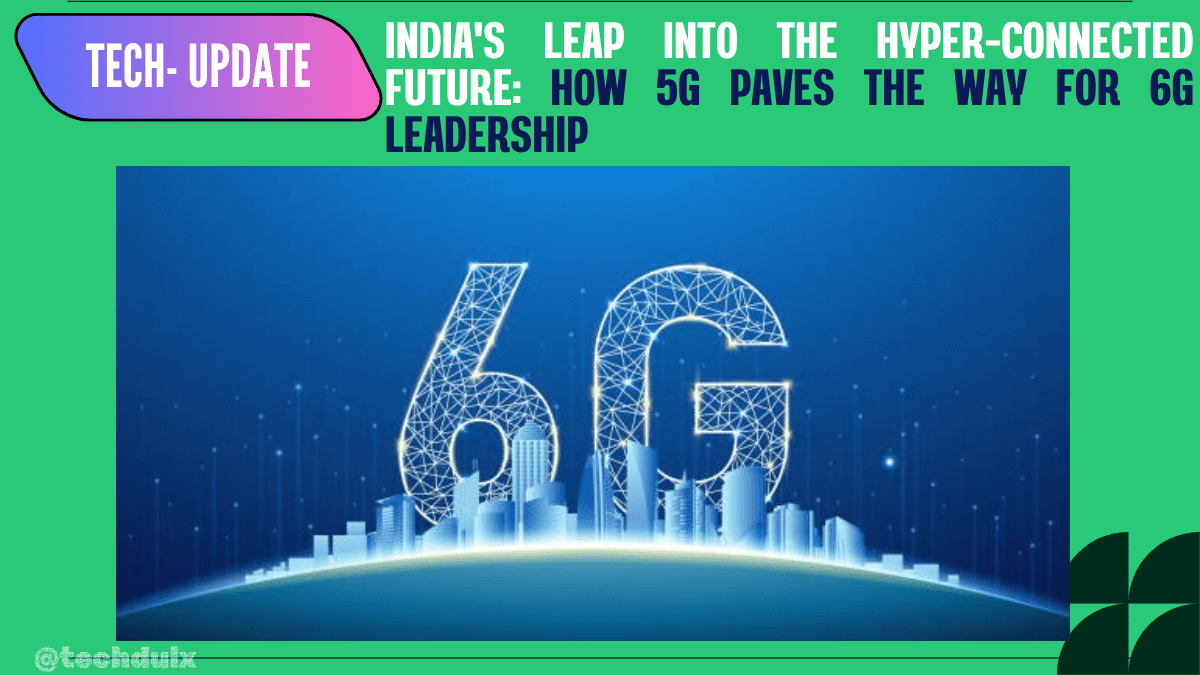From lightning-fast downloads to a seamless digital ecosystem, India is aggressively pursuing the next generation of connectivity. Discover the ambitious vision for 6G and the crucial role of spectrum.
The Race to Tomorrow’s Connectivity
India is not just keeping pace with global technological advancements; it’s actively shaping them. While 5G networks are rapidly expanding across the nation, providing unprecedented speeds and new capabilities, the sights are already set on the next frontier: 6G. This isn’t just about faster internet; it’s about building a hyper-connected, intelligent network ecosystem that will transform every aspect of our lives. India’s proactive approach, backed by strategic initiatives and a clear vision, positions it as a key player in the global race for 6G leadership.
5G’s Strong Foundation: A Springboard for 6G
India’s 5G rollout has been nothing short of remarkable. With services now available in nearly all districts and hundreds of thousands of 5G base stations deployed, the country has quickly moved from a nascent 5G market to a frontrunner. This extensive 5G infrastructure is more than just a current achievement; it’s the vital stepping stone for 6G.
- Rapid Expansion: India’s aggressive 5G deployment, exceeding initial rollout obligations, shows a strong commitment to advanced connectivity.
- Capacity Building: The existing 5G networks lay the groundwork for handling the even greater data demands and ultra-low latency that 6G will bring.
- Indigenous Innovation: Lessons learned and technologies developed during the 5G journey are directly contributing to 6G research and development.
Bharat 6G Vision: India’s Ambitious Blueprint
The Indian government unveiled the “Bharat 6G Vision” document in March 2023, outlining a bold roadmap to position India as a global leader in 6G technology by 2030. This vision is built on core principles of affordability, sustainability, and ubiquity, ensuring that the benefits of this next-generation technology reach everyone.
- Two-Phase Roadmap:
- Phase I (2023–2025): Research and Development: Focus on foundational technologies, pilot projects, and innovative network architectures.
- Phase II (2025–2030): Deployment and Commercialization: Aiming for nationwide 6G infrastructure rollout and seamless integration into India’s digital economy.
- Key Focus Areas: India is heavily investing in exploratory research for cutting-edge areas like Terahertz (THz) communication, quantum networks, and AI-optimized protocols – all crucial for 6G.
- Global Collaboration: India is actively working with international organizations like the International Telecommunication Union (ITU) and forging partnerships with countries like Japan, Singapore, and Finland to influence global 6G standards and accelerate innovation. India’s contributions to the IMT 2030 framework, particularly the inclusion of ‘Ubiquitous Connectivity’ as a key 6G usage scenario, highlight its growing influence.
- Economic Impact: Successful 6G implementation is projected to contribute up to $1 trillion to India’s GDP by 2035, empowering industries and boosting productivity.
The Spectrum Debate: Powering the Next Wave
Spectrum, the invisible airwaves that carry wireless signals, is the lifeblood of any mobile network. For 6G, efficient and strategic allocation of spectrum is paramount. Currently, discussions are ongoing regarding various frequency bands for 6G, with some under study by the ITU for IMT2030 (6G) consideration. The World Radiocommunication Conference in 2027 will be a crucial event in determining these identifications.
A significant recent development revolves around the 6 GHz spectrum band (5925 MHz-7125 MHz), which has been a point of contention between telecom companies and tech giants.
- The Telcos’ View: Telecom operators, like Reliance Jio and Bharti Airtel, advocate for reserving the entire 6 GHz band for licensed mobile telecommunication, crucial for future 5G and 6G services. They emphasize the need for adequate spectrum to support the rapid growth of 5G and prepare for 6G.
- The Tech Companies’ Stance: Tech companies, represented by groups like the Broadband India Forum (BIF), have pushed for delicensing parts of this band for free use to boost Wi-Fi services, especially for next-generation Wi-Fi 6E and Wi-Fi 7, which offer significantly faster speeds.
- India’s Latest Move: In a recent draft notification, the Ministry of Communications proposed delicensing a portion of the 6 GHz band (specifically 5925 MHz – 6425 MHz) for license-free indoor use.
- Impact: This is a major win for tech companies and will pave the way for faster Wi-Fi speeds, supporting devices like advanced gaming consoles and VR gear.
- Industry Response: While welcomed, some industry bodies argue that this partial delicensing might limit the full potential, advocating for more of the 6 GHz band to be freed up to fully power next-generation technologies crucial for India’s digital public infrastructure.
- TRAI’s Role: The Telecom Regulatory Authority of India (TRAI) is actively involved in these discussions, making recommendations on spectrum assignment, including the introduction of “Terahertz Experimental Authorization” (THEA) to boost 6G research and development in higher frequency bands (95 GHz to 3 THz).
The Road Ahead: Challenges and Opportunities
India’s journey to 6G leadership is ambitious but achievable.
- Key Challenges: These include ensuring adequate and harmonized spectrum availability, fostering continuous indigenous innovation, attracting significant investment in R&D and infrastructure, and bridging the digital divide to ensure equitable access.
- Immense Opportunities: 6G promises to unleash transformative changes across sectors like healthcare (real-time telemedicine, robotic surgeries), education (3D virtual classrooms), transportation (Urban Air Mobility), and manufacturing, contributing significantly to India’s digital economy and social inclusion.
Conclusion: A Hyper-Connected India by 2030
India’s unwavering commitment to 6G, building on its successful 5G foundation, signifies a powerful stride towards a truly hyper-connected future. With the “Bharat 6G Vision” as its guiding star, and ongoing efforts in spectrum policy and research, India is poised to not just adopt, but lead the development and deployment of this revolutionary technology, solidifying its position as a global telecommunications powerhouse by 2030. The journey from 5G to 6G is a testament to India’s digital ambition, promising a future where connectivity is not just fast, but intelligent, ubiquitous, and empowering for all.
